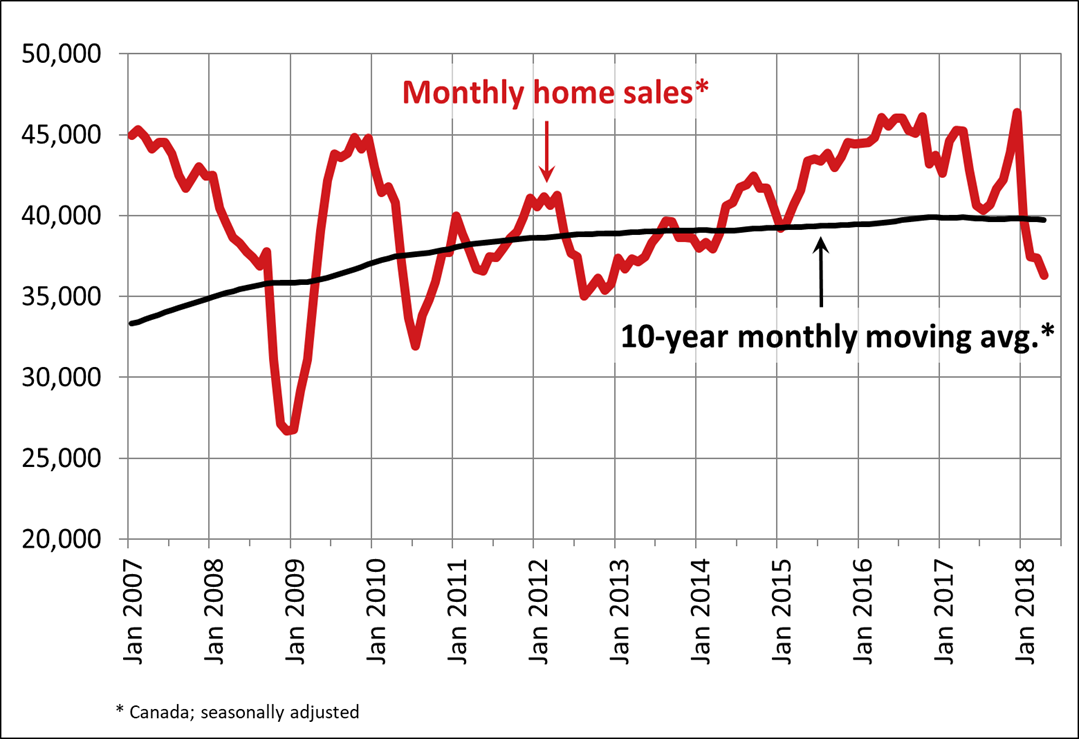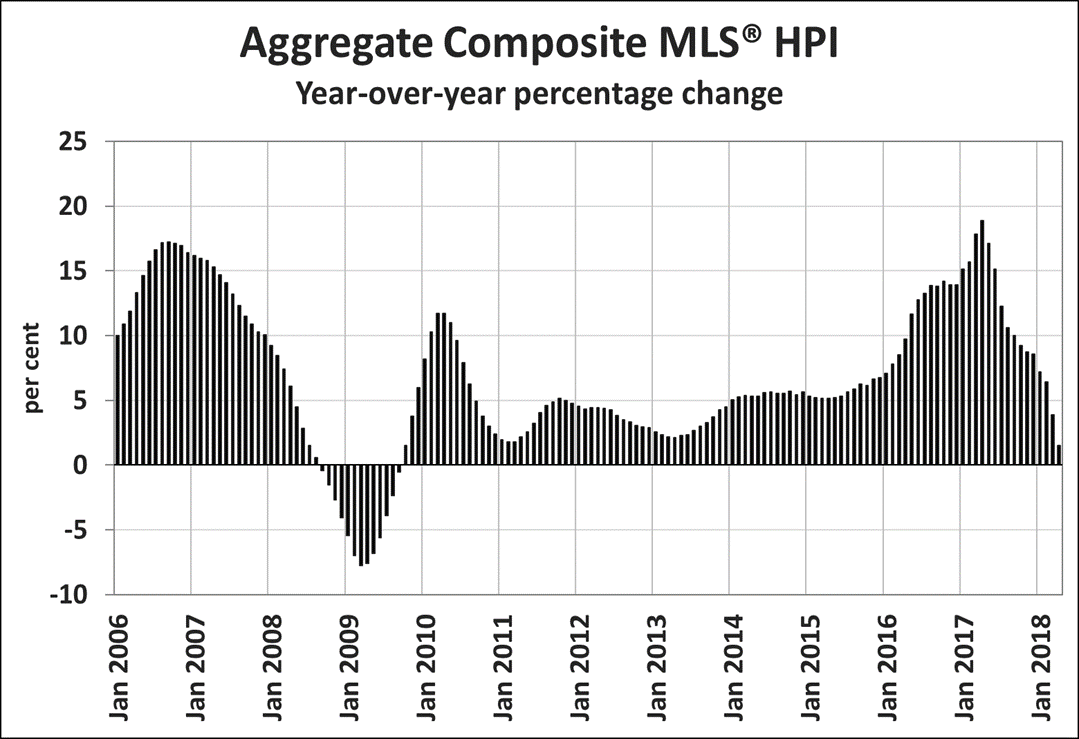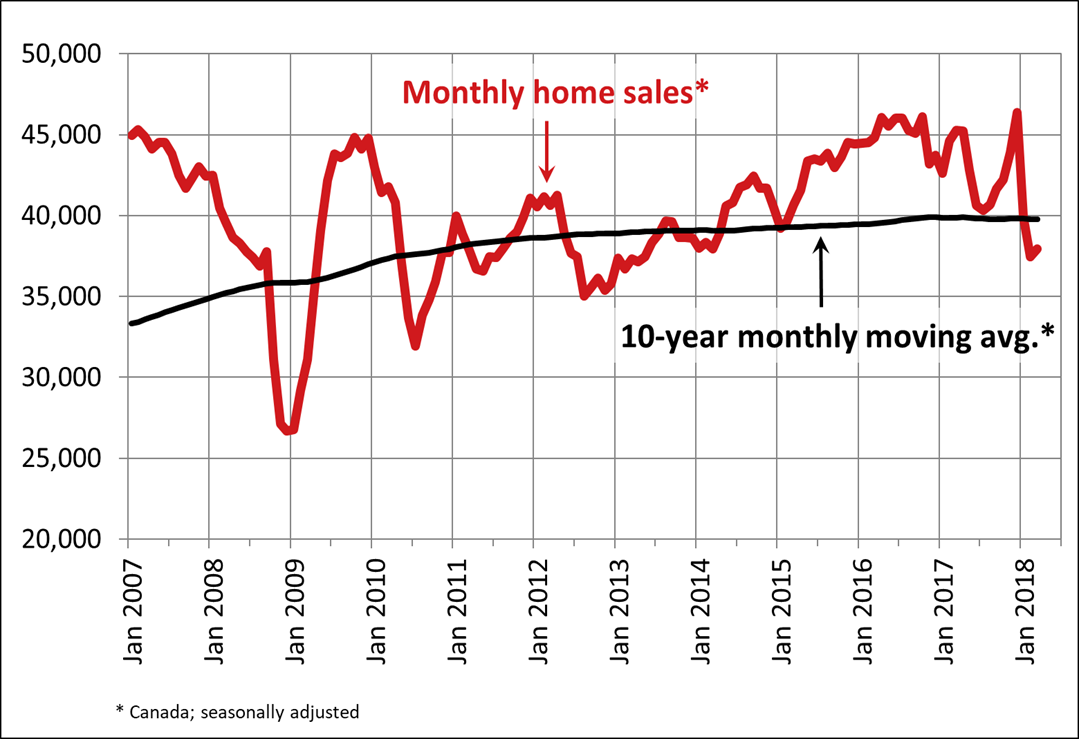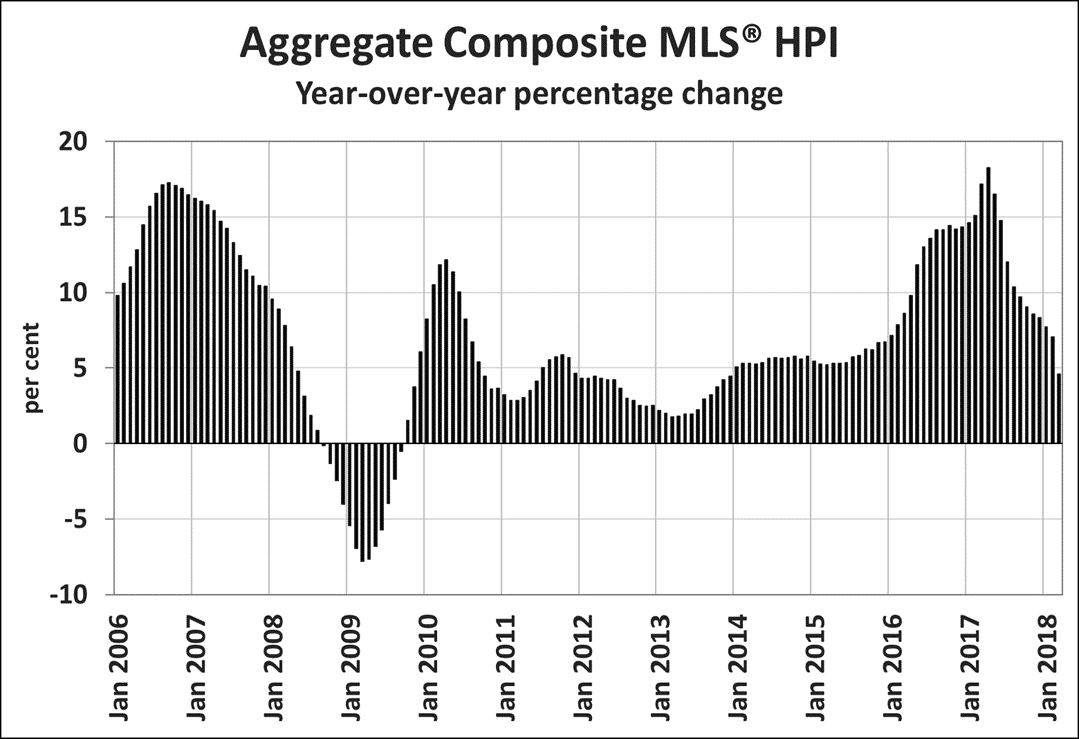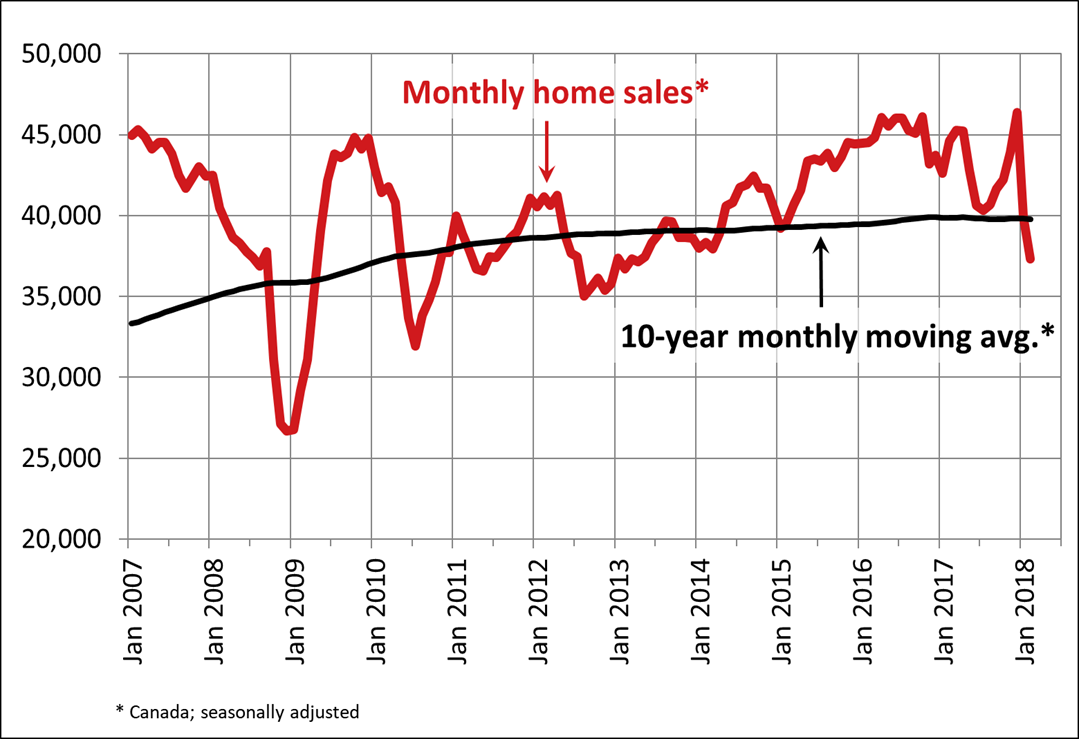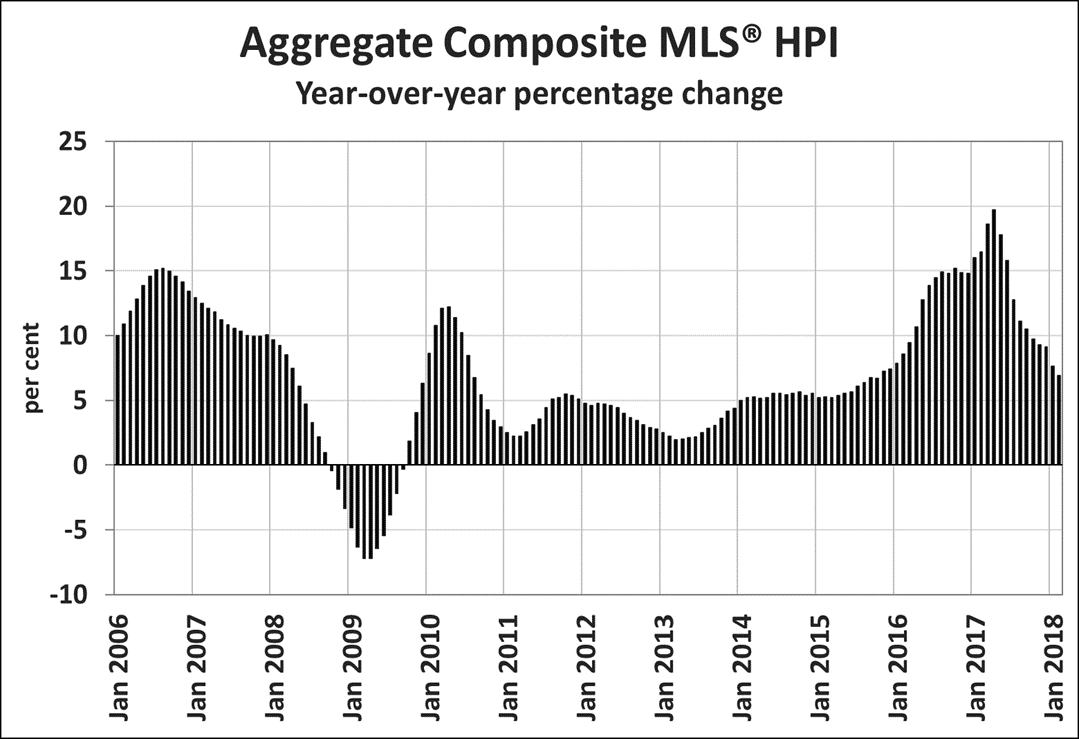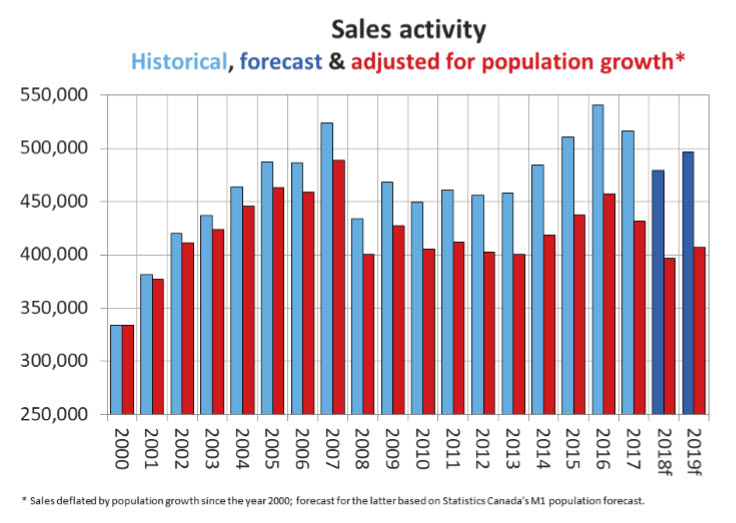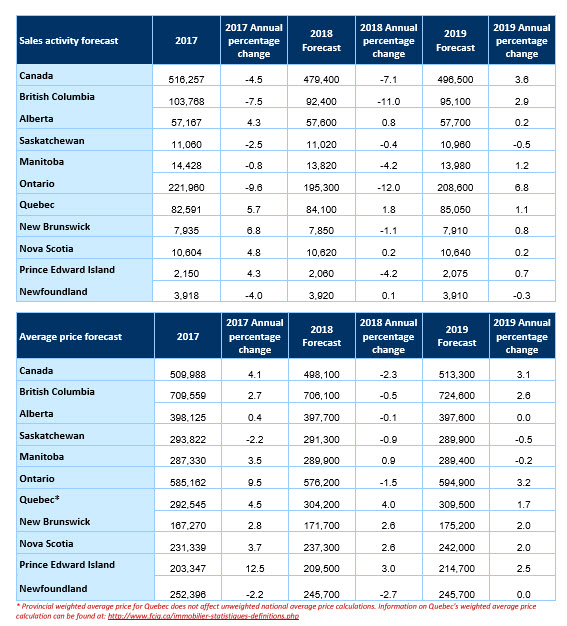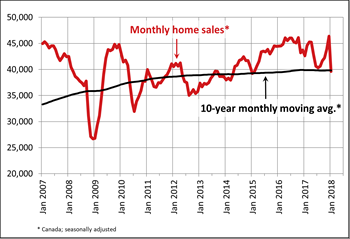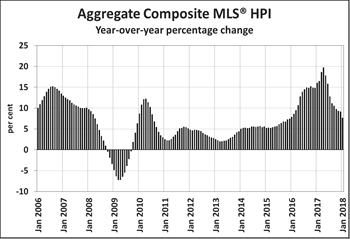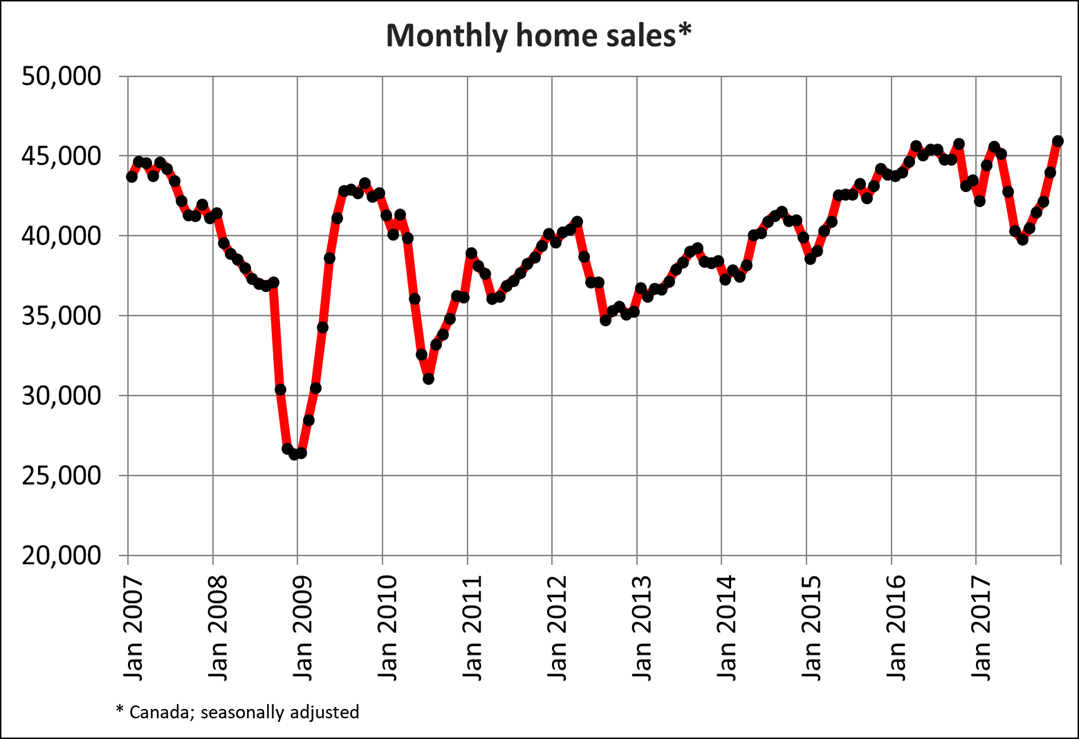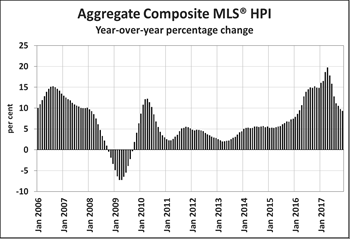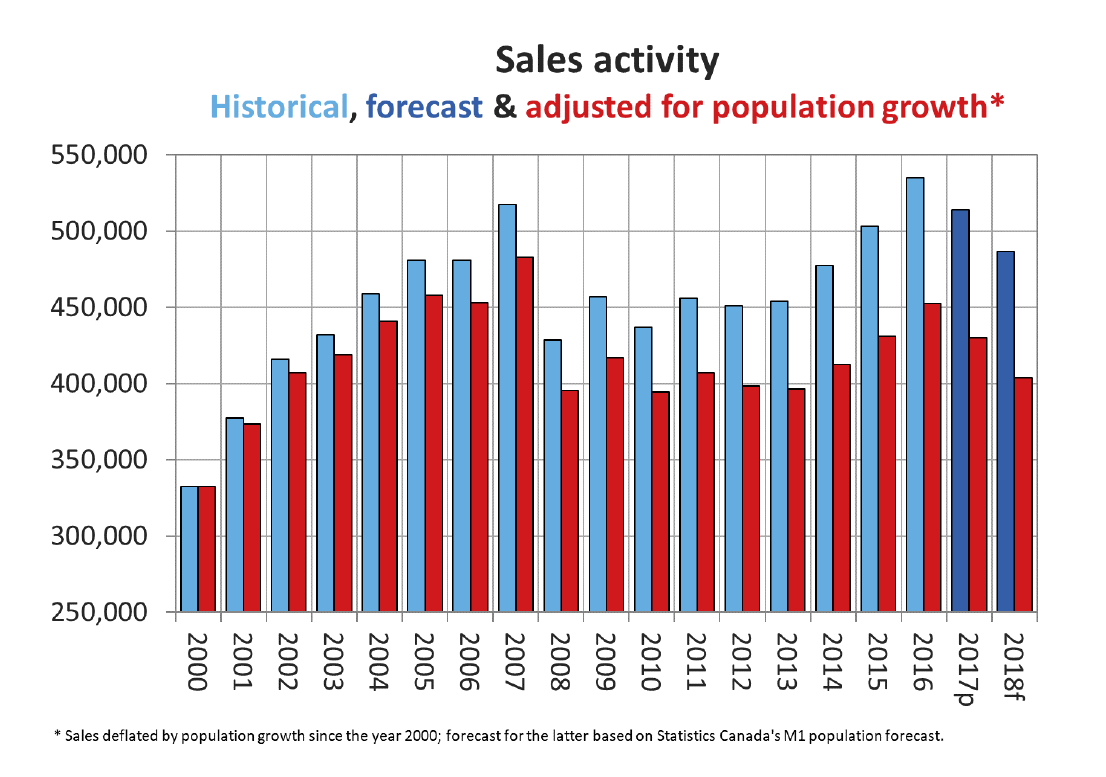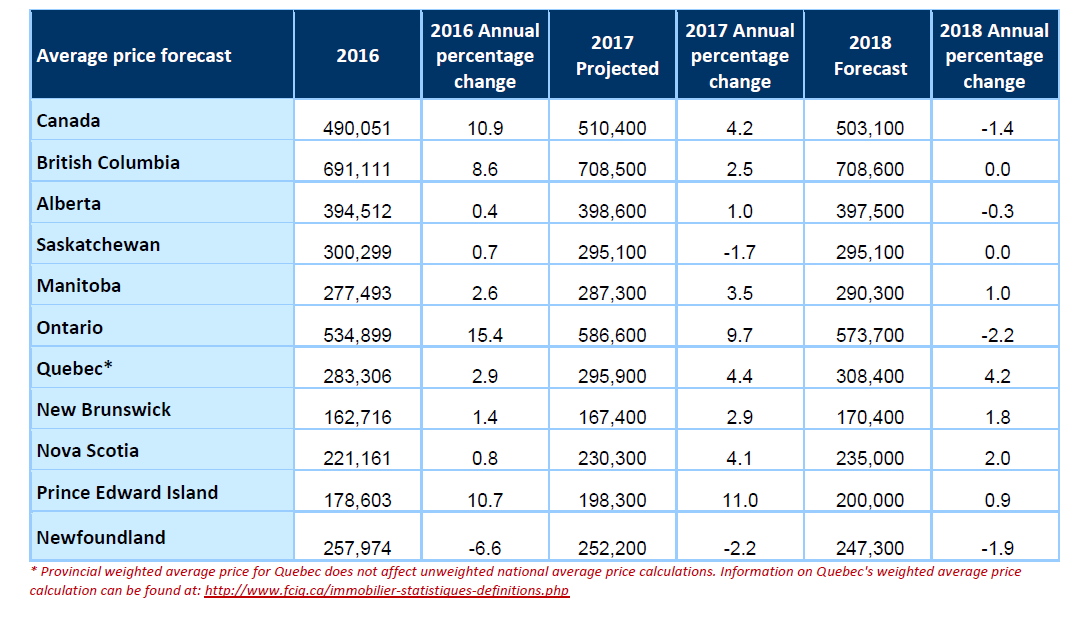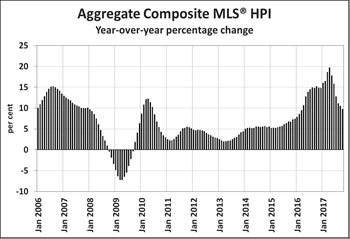Canadian home sales fall in April
Ottawa, ON, May 15, 2018 – Statistics released today by The Canadian Real Estate Association (CREA) show national home sales fell from March to April 2018.
Highlights:
- National home sales fell 2.9% from March to April.
- Actual (not seasonally adjusted) activity was down 13.9% from April 2017.
- The number of newly listed homes declined 4.8% from March to April.
- The MLS® Home Price Index (HPI) in April was up 1.5% year-over-year (y-o-y).
- The national average sale price declined by 11.3% y-o-y in April.
National home sales via Canadian MLS® Systems declined by 2.9% in April 2018 to the lowest level in more than five years (Chart A). About 60% of all local housing markets reported fewer sales, led by the Fraser Valley, Calgary, Ottawa and Montreal.
Actual (not seasonally adjusted) activity was down 13.9% compared to April of last year and hit a seven-year low for the month. It also stood 6.9% below the 10-year average for the month. Activity was below year-ago levels in about 60% of all local markets, led overwhelmingly by the Lower Mainland of British Columbia and by markets in and around Ontario’s Greater Golden Horseshoe (GGH) region.
“The stress-test that came into effect this year for homebuyers with more than a twenty percent down payment continued to cast its shadow over sales activity in April,” said CREA President Barb Sukkau. “Its impact on housing markets varies by region,” she added. “A professional REALTOR® is your best source for information and guidance in negotiations to purchase or sell a home during these changing times,” said Sukkau.
“This year’s new stress test has lowered sales activity and destabilized market balance for housing markets in Alberta, Saskatchewan and Newfoundland and Labrador Provinces,” said Gregory Klump, CREA’s Chief Economist. “This is exactly the type of collateral damage that CREA warned the government about. As provinces whose economic prospects have faced difficulties because they are closely tied to those of natural resources, it is puzzling that the government would describe the effect of its new policy as intended consequences.”
The number of newly listed homes declined 4.8% in April. Having reached a nine-year low for the month, new listings stood 12% below the 10-year monthly moving average.
With sales having fallen by less than new listings, the national sales-to-new listings ratio firmed slightly to 53.7% in April compared to 52.6% in March. The long-term average for the measure is 53.4%.
A national sales-to-new listings ratio of between 40% and 60% is generally consistent with a balanced national housing market, with readings below and above this range indicating buyers’ and sellers’ markets respectively; however, the range consistent with balanced market conditions varies at the local market level.
For that reason, considering the degree and duration that market balance readings are above or below their long-term average is a better way of gauging whether local housing market conditions favour buyers or sellers. Market balance measures that are within one standard deviation of their long-term average are generally consistent with balanced market conditions.
Based on a comparison of the sales-to-new listings ratio with its long-term average, about 60% of all local markets were in balanced market territory in April 2018.
The number of months of inventory is another important measure for the balance between housing supply and demand. It represents how long it would take to liquidate current inventories at the current rate of sales activity.
There were 5.6 months of inventory on a national basis at the end of April 2018, the highest level since September 2015. The long-term average for the measure is 5.2 months.
The Aggregate Composite MLS® Home Price Index (MLS® HPI) was up 1.5% y-o-y in April 2018. This marks one full year of decelerating y-o-y gains. It was also the smallest y-o-y increase since October 2009. (Chart B)
Decelerating y-o-y home price gains largely reflect trends among GGH housing markets tracked by the index. Home prices in the region have stabilized and have begun trending higher on a monthly basis; however, rapid price gains recorded one year ago have contributed to deteriorating y-o-y price comparisons.
Apartment units again posted the largest y-o-y price gains in April (+14.7%), followed by townhouse/row units (+6.5%). By contrast, one-storey and two-storey single family home prices were down (-1.1% and -4.8% y-o-y respectively).
With this release, housing market coverage for MLS® HPI now includes Barrie and District. Benchmark home prices in April were up from year-ago levels in 9 of the 15 markets tracked by the index.
Composite benchmark home prices in the Lower Mainland of British Columbia continue to trend upward after having dipped briefly in the second half of 2016 (Greater Vancouver (GVA): +14.3% y-o-y; Fraser Valley: +22.7% y-o-y). Apartment and townhouse/row units have been largely driving this regional trend while single family home prices in the GVA have stabilized. In the Fraser Valley, single family home prices have now also begun to rise.
Benchmark home prices continued to rise by about 14% on a y-o-y basis in Victoria and by about 20% elsewhere on Vancouver Island.
Within the GGH region, price gains have slowed considerably on a y-o-y basis but remain above year-ago levels in Guelph (+5.9%). By contrast, home prices in the Greater Toronto Area (GTA), Oakville-Milton and Barrie and District were down from where they stood one year earlier (GTA: -5.2% y-o-y; Oakville-Milton: -8.7% y-o-y; Barrie and District: -8.4% y-o-y). This reflects rapid price gains recorded one year ago and masks recent month-over-month price gains in these markets.
Calgary and Edmonton benchmark home prices were again little changed on a y-o-y basis (Calgary: +0.1% y-o-y; Edmonton: -0.9% y-o-y), while prices in Regina and Saskatoon remained down from year-ago levels (-6.5% y-o-y and -3.4% y-o-y, respectively).
Benchmark home prices rose by 8.4% y-o-y in Ottawa (led by a 9.4% increase in two-storey single family home prices), by 6.3% in Greater Montreal (led by a 7.3% increase in two-storey single family home prices) and by 4.2% in Greater Moncton (led by a 5.6% increase in one-storey single family home prices). (Table 1)
The MLS® HPI provides the best way of gauging price trends because average price trends are strongly distorted by changes in the mix of sales activity from one month to the next.
The actual (not seasonally adjusted) national average price for homes sold in April 2018 was just over $495,000, down 11.3% from one year earlier.
The national average price is heavily skewed by sales in the GVA and GTA, two of Canada’s most active and expensive markets. Excluding these two markets from calculations cuts more than $109,000 from the national average price to just under $386,100 and trims the y-o-y decline to 4.1%.
– 30 –
PLEASE NOTE: The information contained in this news release combines both major market and national sales information from MLS® Systems from the previous month.
CREA cautions that average price information can be useful in establishing trends over time, but does not indicate actual prices in centres comprised of widely divergent neighbourhoods or account for price differential between geographic areas. Statistical information contained in this report includes all housing types.
MLS® Systems are co-operative marketing systems used only by Canada’s real estate Boards to ensure maximum exposure of properties listed for sale.
The Canadian Real Estate Association (CREA) is one of Canada’s largest single-industry trade associations, representing more than 125,000 REALTORS® working through some 90 real estate Boards and Associations.
Further information can be found at http://crea.ca/statistics.
For more information, please contact:
Pierre Leduc, Media Relations
The Canadian Real Estate Association
Tel.: 613-237-7111 or 613-884-1460
E-mail: [email protected]

